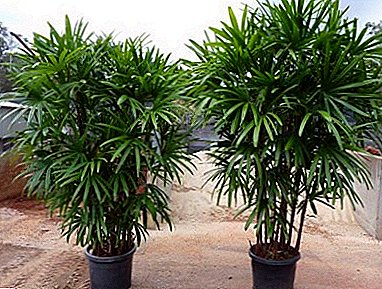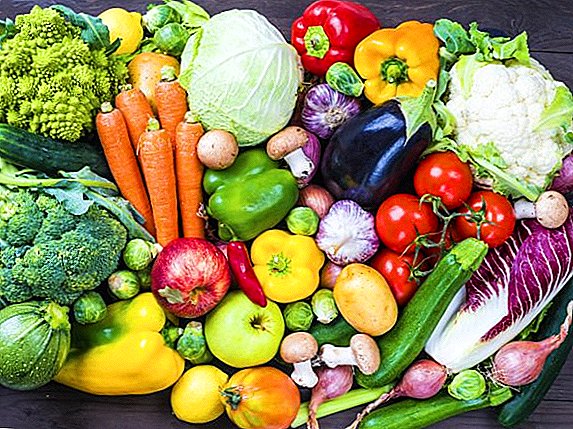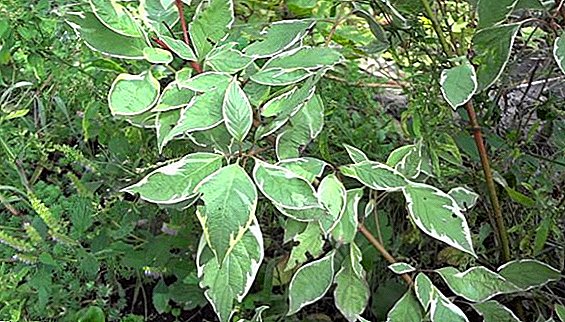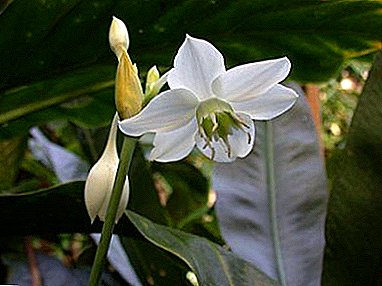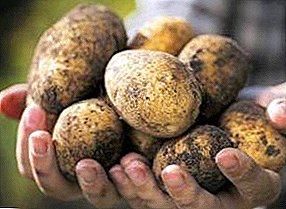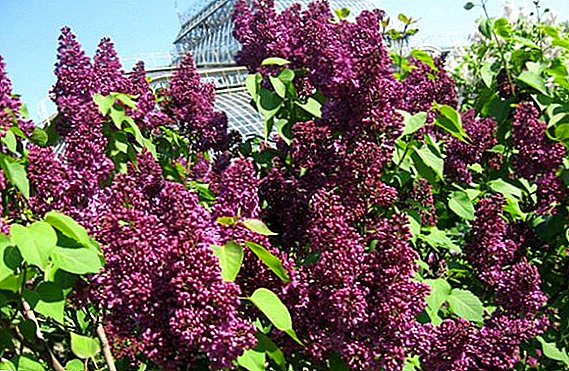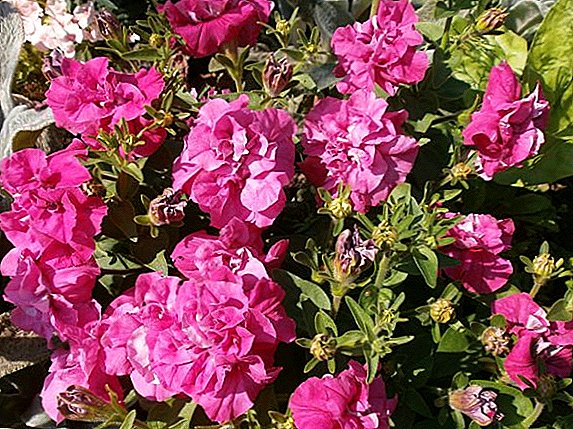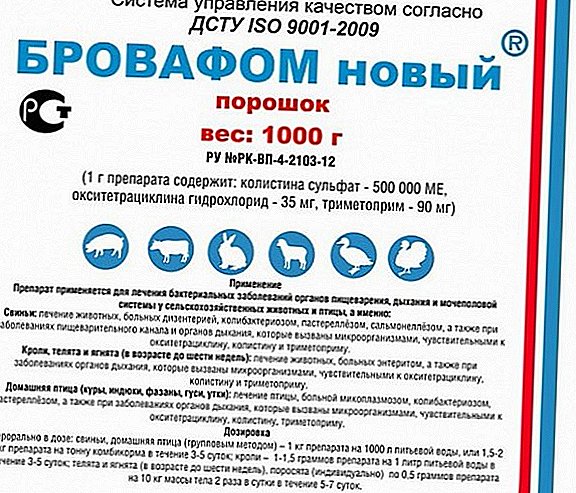 A cow's sudden refusal to eat is a serious problem, which can be explained by the influence of a variety of factors on an animal. Understanding the root causes of this phenomenon is necessary in the shortest possible time, so as not to aggravate the situation and not lose the wheeler.
A cow's sudden refusal to eat is a serious problem, which can be explained by the influence of a variety of factors on an animal. Understanding the root causes of this phenomenon is necessary in the shortest possible time, so as not to aggravate the situation and not lose the wheeler.
Find out what cows eat, and what reasons may serve as a basis for reducing appetite or its complete absence.
What do cows eat
The main food of cows in the summer is grass, which they eat all day in pastures. However, for them this is not the only source of energy. 
Vegetable feed
Vegetable food in one form or another is available all year round, so in the absence of juicy and green ones they can always be replaced by rough ones.
Rough
In the diet of cows, this group of feed is represented mainly by hay and straw. Both products must be of the highest quality and fresh, which will provide animals with enough fiber, protein and vitamins.
The nutritional value of hay will directly depend on the time of its harvesting, which are part of plants and the storage conditions of dried raw materials.
Important! When harvesting hay for cows, avoid poisonous plants. These include: buttercup, bee-hell, gorchak, henbane.
The most valuable for cows is the product obtained from the collection of the following herbs:
- cereals (meadow foxtail, timothy grass, fescue, creeping couch grass, meadow bluegrass);
- legumes (alfalfa, clover, espartit);
- barley and oat straw.

Greens
This group includes mainly meadow grasses and specially grown vegetation suitable for feeding cattle. All of them are distinguished by high nutritional value and consist of high-grade proteins, amino acids, minerals and vitamins.
It will also be useful for you to learn about the feeding characteristics of dry cows, how and what to feed a cow in winter, what feed additives are necessary for cattle, and also, for which cows are given beet pulp and salt.
The most valuable for cows will be such green food:
- clover;
- alfalfa;
- Vika;
- peas;
- corn;
- barley.
If in the summertime most of the above is available for the cows, in the winter the supply of such food is limited - of course, if you do not engage in its special cultivation in a hydroponic way.
For these purposes, perfectly suitable seeds of corn, barley, peas and some other crops, allowing to get from 1 kg of dry seeds to 6-12 kg of greens. 
Juicy
Succulent feeds are products of plant origin with a high content of liquid in the composition. Haylage, silage, fresh root crops and melons and gourds are used to feed the cows.
Of these feeds in the diet of the cow may be present:
- beet;
- carrot;
- pumpkin;
- potatoes;
- watermelons;
- corn and sunflower silage (in winter);
- haylage prepared from a mixture of vetch, oats, clover, alfalfa.
Did you know? There are 25,000 taste buds in the cow's tongue, and to help themselves chew food, these animals have to allocate up to 150 liters of saliva per day. Of course, the drier the food, the more saliva is required.
All these products have high diuretic and dietary properties and are well eaten by animals, stimulating their appetite. The main disadvantage of succulent feeds is a limited storage period, so before issuing it is necessary to check such feed for the presence of rot and other signs of the onset of spoilage. 
Concentrated
Concentrated feeds are grain mixtures and by-products of grain and oilseed processing. Such food always has a high nutritional value and can contain up to 16% of water and 15% of fiber, which are absorbed by the body in the range of 70-90%.
The total nutritional value of concentrated feed is 0.7-1.3 feed units per 1 kg.
The most valuable for cows will be mixtures with the following components:
- crushed grain - about 50%
- bran;
- meal;
- cake;
- grass meal and other similar ingredients sharing the other half of the space in concentrated feed.
The nutritional value of these mixtures is higher than the previous ones, so they are indispensable in the preparation of a full-fledged forage reserve of cows.
Animal origin
In addition to the products already listed, it is useful to introduce products of animal origin into the diet of cattle. It can not be considered a complete feed, but for the role of an additive, it fits perfectly.  For a balanced diet, cows need:
For a balanced diet, cows need:
- meat and bone meal;
- serum;
- fish production waste.
All together, such supplements provide the animal's body with enough protein, minerals and vitamins. The main thing that is required of the farmer is to properly enter them into the diet of cows, without abuse. This is the only way to ensure good weight gain and milk yields.
The cow does not eat well or does not eat at all
There are so many reasons for a cow to refuse food, that even an experienced farmer will not always be able to immediately figure out what the matter is. Lack of appetite may be due to a sharp change in diet, as well as more serious problems. There are a number of basic reasons that should be carefully studied.
Disruption of body metabolism
Disturbance of metabolic processes in the animal’s body is most often a consequence of the existing problem, rather than an independent factor in reducing appetite (for example, a similar phenomenon is observed with ketosis).
However, there are cases when metabolic disturbances are caused by improper actions of the farmer himself, issuing a lot of protein-rich feed to the cows. In addition, a disorder of normal metabolism may be a consequence of the regular use of low-quality food or irregular feeding of cattle.  The clinical symptoms of a metabolic disorder will depend on several factors:
The clinical symptoms of a metabolic disorder will depend on several factors:
- quantities of ketone bodies contained in the blood;
- reducing glucose and alkaline blood deficiency;
- disruption of the normal functioning of internal organs.
If such violations are not eliminated in time, the animal will quickly lose an attractive appearance (dermatitis and loss of hair are often observed) and reduce the milk yield, frequent diarrhea will quickly be replaced by constipation, skin elasticity will decrease, and the liver will increase.
Unsanitary conditions of detention
Sanitation in the barn is often the main cause of many diseases, especially gastrointestinal infections.
Learn how to build a barn for your own cows.
Of course, with any failure of the body or any painful manifestations of the animal will refuse to eat.
In addition, some cows just do not want to eat dirty and trapped feed, so all food should be fresh, and in the barn you should definitely restore order.
Sharp diet change
The cow's body very quickly becomes accustomed to the diet, adapting to it and all the processes occurring inside. Therefore, the sudden introduction of a new product can cause prolonged diarrhea, which in turn will adversely affect the overall condition of the female cow.  Any change in the cattle menu should be smooth, being carried out for 1-2 weeks.
Any change in the cattle menu should be smooth, being carried out for 1-2 weeks.
Important! The taste of any food will also affect the taste of animal milk, so if you want to get only tasty products, such bitter plants like wormwood should be excluded from the diet.
Overeating or poisoning
The reason for the refusal of food can serve as the deterioration of the cow, caused by overeating or poisoning. In the first case, a long walk in the fresh air will help to alleviate the suffering of the cow, while in the second case, medical intervention with the use of drugs to normalize the work of the stomach may be required.
Poisoning by chemical compounds also requires the removal of intoxication of the body, for which special medications are also used.
In order to prevent such problems, before issuing food to animals, it is necessary to ensure its high quality, the absence of mold and other signs of deterioration.
Foreign objects in the stomach of a cow
Caring and responsible owners before grazing cows should always examine the pasture and exclude the possibility of the presence of foreign objects. Nevertheless, even in this case there is no guarantee that the animal will not find a rusty nail, a piece of glass or wire in the high grass.
Any of these items, getting into the digestive system, easily injures the mucous membranes, as a result of which the cow becomes lethargic, stops eating and reduces milk yield. The gum may be completely absent, or be very weak. 
Postpartum, prenatal paresis
In the prenatal and postnatal period, the cow needs special care from the owner. This means that the conditions of detention, grazing and food should be at the highest level, since the probability of indigestion is now very, very high. In addition, we should not exclude the possibility of the development of prenatal and postpartum paresis. Basically, this disease manifests itself in cows immediately after calving, and the reasons for its occurrence are still unclear. In diseased animals, paralysis of the limbs, tongue, larynx and disturbance of the digestive processes is observed, which serves as a reason for refusing food.
Worms
Worm infestation in cattle is one of the main causes of abrupt weight loss, depression and refusal of food. In some cases, animals have constipation (or vice versa, diarrhea), and when the condition worsens, anemia develops.
Often, the mucous membranes turn pale, and the wool begins to roll and loses its usual luster.
Important! If there are no external signs of the presence of worms, but the taste qualities of milk have deteriorated sharply, and its quantity has decreased - this is an excuse to suspect the activity of parasites in the body of the female and to take appropriate measures (at least consult with a veterinarian).
Ketosis
This word refers to a disease of animals, characterized by an increase in ketone bodies in their blood, with a simultaneous violation of carbohydrate, protein and fat metabolism. One of the possible reasons for the development of ketosis can serve as a calcium deficiency, which is why the cow not only eats badly, but also reduces milk yield.  It is possible to determine the disease by such characteristic symptoms:
It is possible to determine the disease by such characteristic symptoms:
- sudden refusal of food;
- decrease in the amount of milk;
- the appearance of apathy and lethargy;
- rejection of water or its large consumption;
- no gum.
A cow with ketosis quickly loses weight, looks weak and depleted. Sometimes animals become nervous and restless, and after calving they even refuse to feed the calf and are taken to eat inedible things. When late treatment of ketosis leads to irreversible effects in the body.
Tympania of the scar
Tympanic scar is called acute or chronic condition, manifested by protrusion of the left side, the voltage of the hungry fossa and general anxiety of the cow.
Timpany rumen can be an independent disease caused by indigestion, or act as a result of other pathological factors: for example, blockage of the esophagus or pharynx.
In both cases, the animal refuses to eat, becomes restless, often lies down, and when it rises, it can beat its hooves on the stomach. At the same time, rapid and shallow breathing is observed, and the number of heartbeats increases significantly.  Expansion of the cicatricial chambers under the influence of gases accumulated in them leads to compression of other organs and impaired blood flow, due to which the disease requires immediate medical intervention.
Expansion of the cicatricial chambers under the influence of gases accumulated in them leads to compression of other organs and impaired blood flow, due to which the disease requires immediate medical intervention.
Did you know? If in laboratory conditions carefully examine the contents of a cow's scar, it turns out that only one gram contains about 10 billion bacteria and more than a million simplest microorganisms - ciliates. Most of them are not only harmless to the cow, but also useful, because it is thanks to them that the animal can consume a large amount of vegetable feed.
Atonia rumena
This pathological condition is primarily associated with abnormal, disturbed contraction of the pancreas, which is expressed in the following:
- no gum;
- depressed;
- complete rejection of feed and water.
The cow quickly loses weight and loses weight, milk production practically stops. All digestive processes occurring inside are slowed down, and if the animal is not provided with timely medical assistance, it may die.
To prevent the development of this problem, you should not abuse feed that is difficult to digest (hay, straw or concentrates), as well as feed moldy or low-quality food to the cow, drink dirty water. 
Mastitis
Mastitis is an inflammatory process that occurs in the udder of a cow. It can be a consequence of a disease of the genital organs, and can manifest itself due to bruises or as a result of prolonged maintenance in unsanitary conditions (including during milking).
The main symptoms of mastitis include:
- the presence of blood clots and protein in milk;
- udder swelling;
- fever;
- loss of appetite, up to a complete rejection of food.
The cow becomes lethargic and apathetic, lies more than it is worth, and gives very little milk. In some cases (mainly when the disease is running), the milking process gives pain to the cow.
The complexity of the treatment of mastitis depends on its form (catarrhal, serous, fibrous, hemorrhagic, subclinical and colimastitis are distinguished).  Thus, a variety of problems in the body of a cow lead to the rejection of food. If such a condition becomes the norm and is accompanied by a deterioration in the general state of health of the animal, then one cannot do without the help of a veterinarian. And the sooner you start the treatment, the faster it will bring results.
Thus, a variety of problems in the body of a cow lead to the rejection of food. If such a condition becomes the norm and is accompanied by a deterioration in the general state of health of the animal, then one cannot do without the help of a veterinarian. And the sooner you start the treatment, the faster it will bring results.


